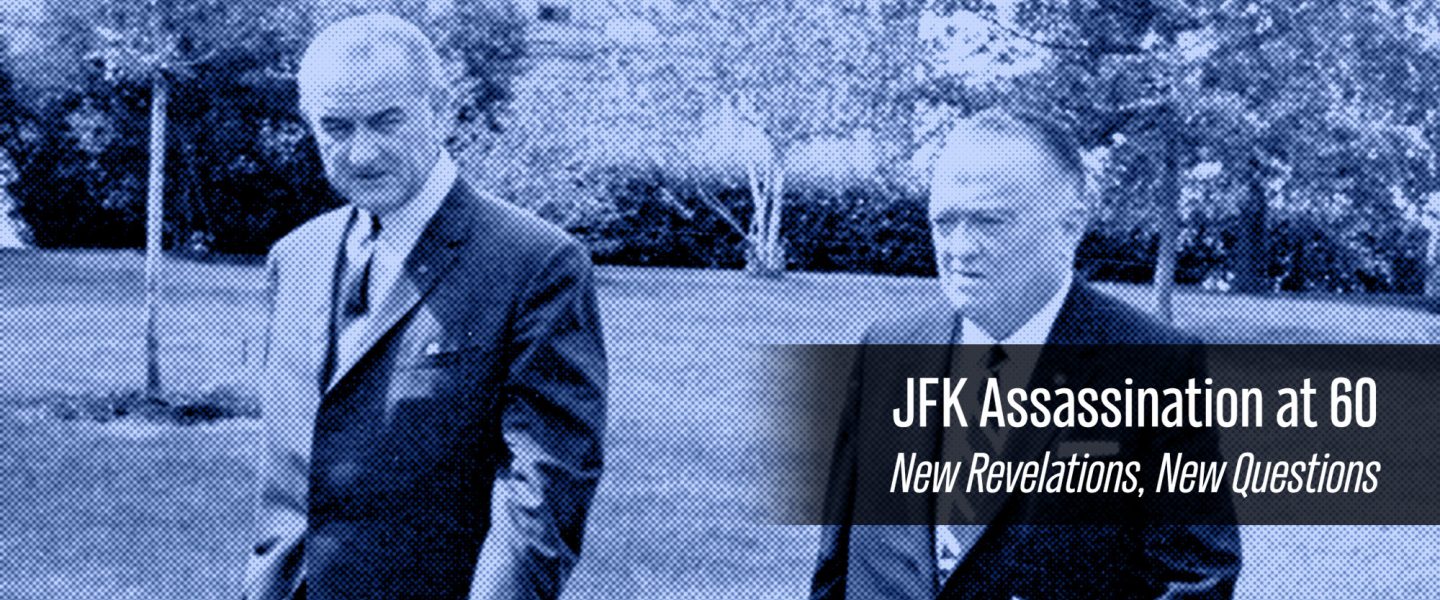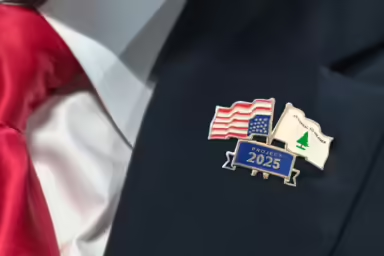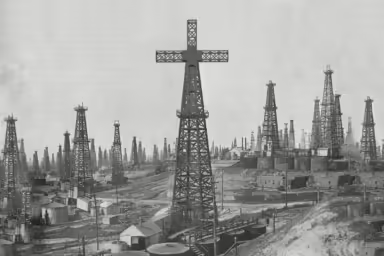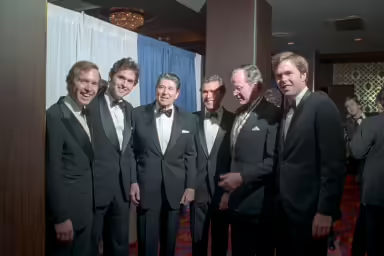What does it mean when two powerful men — Lyndon Johnson and J. Edgar Hoover — privately agree that the public story of the Kennedy assassination is false?
|
Listen To This Story
|
This month marks the 60th year since President John F. Kennedy was assassinated in Dallas. Although dismissed by some as merely ancient history — and as irrelevant in today’s world — the assassination’s effects continue to resonate throughout government and society.
The American public has never been satisfied with the conclusion of the first official investigation, the Warren Commission, that Lee Oswald, an ex-Marine it characterized as a disaffected leftist, managed to pull off a fast, precise series of shots, against an idealistic president whom, by all accounts, Oswald liked and admired. Doubts grew after Oswald, who denied shooting anyone, was himself murdered less than 48 hours later on live TV — while in police custody — before he could defend himself in court.
The second official investigation, by the House Select Committee on Assassinations (1976-1979), found that a conspiracy was probably to blame — in line with most Americans’ views. But the identity and motives of the conspirators remained elusive.
The Commission’s apparent mandate to obfuscate the truth in this case — and the legacy media’s apparent willingness to perpetuate what many consider a transparent lie — have led to today’s explosion of baseless conspiracy theories. To be sure, reexamining the Kennedy case risks inspiring irrational skepticism among those predisposed to believe any kind of conspiracy.
However, at WhoWhatWhy we believe that unrelenting candor is essential to the health (and indeed survival) of a democracy; that judicious examination of a historical mystery can provide a counterweight to indiscriminate conspiracy-theorizing; and that violent, if disguised, transfer of power is still a pressing issue today.
That is why we mark the anniversary of this event with this series of articles, which highlights some of the copious new evidence from original, in-depth research for a forthcoming book on the Kennedy presidency and assassination. The past truly is prologue; hence, deconstructing this historical turning point is as relevant as interpreting the events of more recent yesterdays.
Click here for the introduction to the series. To see all the articles in the series, click HERE.
President John F. Kennedy was fatally shot on November 22, 1963, as his open-topped limousine glided through Dallas’s Dealey Plaza. Within hours, Dallas police arrested and charged a young New Orleans native, Lee Oswald, who worked in a building overlooking the plaza, situated just where Kennedy’s car had to negotiate a sharp turn.
Eyewitness accounts differed about the origin and number of shots. But a substantial majority of onlookers — including both civilians and law enforcement — believed initially the shots had come from in front of the vehicle, not the rear, the site of the Texas School Book Depository building where Oswald worked at the time Kennedy was struck.
By the next day, authorities were actively dispelling speculation about multiple shooters, adamantly insisting that they had the lone-wolf culprit. Oswald emphatically denied having shot anyone — but before he could expound on his innocence, he was murdered on November 24, while in police custody, by nightclub owner Jack Ruby, who maintained long-standing friendships with both police and organized crime. Despite compelling reasons to dig further, the lone-wolf narrative almost immediately became the official story, reinforced by the September 1964 Warren Commission report and subsequently promulgated by the media. This simplistic account is still widely cited today.
This, despite a late 1970s investigation by a House panel that was longer, better resourced, and far more rigorous, and concluded essentially the opposite: that conspiracy was probably involved.
Had they known of the following incident, they might not have used the word “probably.”
Hiding in Plain Sight
Close examination of a phone call made on November 29, 1963, a week after the assassination, between the new president, Lyndon B. Johnson, and FBI Director J. Edgar Hoover, reveals something astounding.
The two men, though speaking somewhat cryptically, unmistakably reveal that they knew someone aside from Oswald shot at the president that day.
And, so far as we know, the meaning and implications of the comments we focus upon received no attention from either the Warren Commission or the later congressional investigation, and are not noted in other accounts of this call published over the years.
In this remarkable conversation, Hoover made it quite clear to LBJ — without ever spelling it out — that the FBI’s investigation indicated at least one shot was fired at Kennedy… from the front.
That is, frankly, earthshaking. Even more so when combined with the fact that LBJ and Hoover referred to Kennedy’s assassin not as “he” — meaning Lee Oswald, already charged with the crime a week earlier — but as “they.”
***
The world was already being told that all bullets came from one person firing from a fixed position at the rear — from an upper floor of the Texas School Book Depository building, where Oswald had worked since October, and which the limo had already passed when the shooting started. The Warren Commission would later follow suit, saying in its 1964 report that three shots were fired, all from the rear.
But when Johnson and Hoover spoke, the government had not promulgated a detailed reconstruction of the shots, besides making clear it believed they all came from Oswald in his workplace. The FBI was still gathering and analyzing evidence.
Since both men knew that Johnson’s calls were routinely recorded by an official taping system, one can expect that they spoke obliquely, which is not uncommon for powerful people discussing sensitive matters and aware that others may at some point have access to the recording.
The conversation occurred one week following the assassination, after Oswald had been killed, and after the bare bones of the “lone-gunman” theory had been circulating. It began with Johnson telling Hoover that he would probably proceed to appoint an investigative commission (which would become the “Warren Commission,” chaired by US Chief Justice Earl Warren), and asking Hoover’s opinion on some possible commission members. The call continued with Johnson inquiring about details revealed by the investigation so far, including Oswald’s movements after the assassination and the background of Oswald’s killer, Jack Ruby.
Hoover provides a progress report, and eventually, as seen on page 5 of the transcript, describes the FBI’s latest reconstruction of the shot sequence. Johnson asks about the one that hit Texas Gov. John Connally. (Reminder: Notice the use of the word “they.”)
LBJ: Were they aiming at the president?
JEH: They were aiming directly at the president… [continues with description of the rifle found in the Book Depository]
LBJ: How did it happen they hit Connally?
JEH: Connally turned to the president, when the first shot was fired, and I think in that turning, it was where he got hit.
LBJ: If he hadn’t turned, he probably wouldn’t have got hit?
JEH: I think that is very likely.
LBJ: Would the president’ve got hit [by] the second one?
JEH: No, the president wasn’t hit with the second one…
LBJ: I say, if Connally hadn’t been in the way?
JEH: Oh, yes…yes…the president would no doubt have been hit…
LBJ: He would have been hit three times…
JEH: [in agreement] He would have been hit three times…
Wait a minute. By this time, the whole world was aware that Connally had been seated directly in front of Kennedy. Johnson would have seen that for himself, being only a few cars back in the motorcade, and of course having had a hand in the protocol arrangements.
There was no chance that Hoover and/or Johnson were confused about Connally’s position relative to Kennedy’s. They also knew that Oswald supposedly shot at the president from behind.
So how could Connally have blocked a bullet intended for Kennedy — if it came from behind?
When Johnson asks if Connally got in the way of a shot meant for Kennedy and Hoover agrees — they are saying the shot that hit Connally came from the front.
Yet throughout the call, the contradiction goes unremarked, and Hoover assures Johnson that the FBI has all it needs to present Oswald as the sole culprit.
Lest one think the two men somehow misspoke or misunderstood each other, a minute or two later in the call Johnson returns to this point:
LBJ: Well your conclusion is that (a) he’s [Oswald’s] the one that did it… (b) the man he was after was the president; (c) he would have hit him three times except the governor turned.
JEH: I think that is correct.
“Correct.” Hoover agrees. Since they knew Connally was seated in front of JFK, their belief that he blocked a bullet headed for Kennedy could only mean one thing: They realized that at least one person was shooting at the motorcade from the front.
These two powerful men could not have failed to understand what they were saying. Yet they let this astonishing conclusion go unremarked.
What is going on here?
***
John Edgar Hoover’s amazing run at the helm of the FBI began in 1924 when he headed its predecessor agency, and ended with his death in 1972. A wily bureaucrat and master power broker whose directorship spanned six presidencies, Hoover stealthily expanded the FBI’s remit into political intelligence, surveillance of domestic dissidents, and accumulation of blackmail material. He was well attuned to presidents’ political needs and knew how to manage adverse information. His FBI quickly became the de facto lead agency for the assassination investigation, especially after the Dallas Police Department’s disgrace in allowing the prime suspect to be murdered in custody.
Lyndon Johnson of Texas, the powerful and ambitious but inelegant Senate majority leader in the 1950s, had hoped for the Democratic Party’s nomination for the presidency in 1960 but found himself surpassed by the more charismatic and debonair junior senator from Massachusetts, John Kennedy. He settled for the vice presidential nomination. Now, with Kennedy murdered mysteriously in Johnson’s own home state, he had to deal with the aftermath, including widespread suspicions about who had really done it.
Where the blame for Kennedy’s killing landed — whether on a single individual or on a larger conspiracy — would define his options for the 14 months till the next presidential term. This was the context of his call to Hoover on November 29, 1963.
What to Make of This?
We’d now like to share with you a little additional useful context — which may be familiar to some aficionados only.
It’s important to know that Johnson either believed in the possibility that a foreign power, most likely the USSR, had been behind the assassination — or at least used that specter to convince others of the right course of action. His purpose was not hard to divine from a careful reading of his private statements and actions: He sought to warn key people that if the public came to believe, rightly or wrongly, that Communist conspirators were behind the assassination, there could be a stampede to war. Much better for the assassination to be neatly wrapped up and a domestic individual persuasively made out to be the sole culprit. Avoiding spiraling dangers and even nuclear war could depend on it.
Combining that with new public suspicion over why Oswald himself was silenced, well, then it didn’t take much for others, including Hoover, to get with a plan: “investigate” fast, explore and blunt any loose ends, and be done with it.
One final matter:
Medical evidence proved that Connally was shot in the back. If he were twisted around, looking at Kennedy, when shot, as LBJ and Hoover agreed, then, depending on how far he had turned, that shot most likely would have come from the front of the motorcade.
And that would not have been Oswald.
About the JFK Assassination Series
In the forthcoming Part II of this article on the Johnson-Hoover call, Hoover discusses a bullet find that tallies with recent revelations, in 2023, by a then-Secret Service agent on the scene — but which disappeared from the Warren Commission’s version — and much more.
This series was inspired by an ongoing project of WhoWhatWhy Founder and Editor-in-Chief Russ Baker to produce a definitive, meticulous, book-length investigation of Kennedy’s death. Robert Smith is a member of the research team assisting Mr. Baker with his forthcoming book.
To read the other articles in this series, go here.
If you have information to bring to our attention about any aspect of the JFK assassination — or are with the media and interested in covering or reproducing our work or inviting Mr. Baker to appear on a program — please click here.
If you would like to be on a mailing list to receive news of the book, click here.




